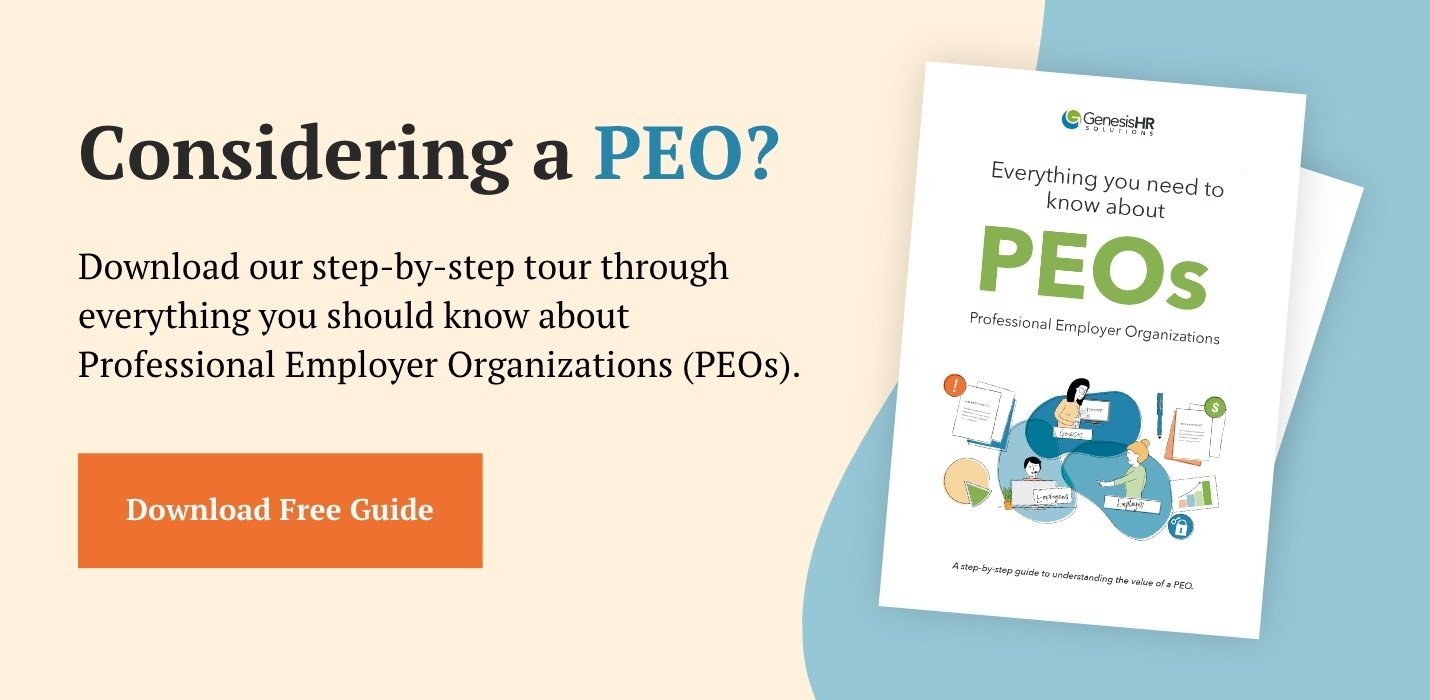If you’re looking for the best and brightest talent, it’s smart to consider your 401(k) options. Here’s a little proof in case you need it:
- 79% of employees view a 401(k) or other retirement plan as a must-have when accepting a job. (MetLife, 2022)
- When asked what benefits would most help employees, 58% of respondents in this study cited a “more generous retirement.”
My guess is, you probably already know the importance of offering some sort of retirement savings plan for your employees. But maybe you’re wondering what’s required for small business 401(k) plans, or are looking for some tips on choosing the strategy that best fits your company.
Here are six things to keep in mind as you investigate and select 401(k) plans for your small business:
Considerations For Choosing Your 401(k) Plan Type & Match Strategy
1. Consider the fee structure of the 401(k) plan you are interested in implementing.
Find out the following:
- What is your company required to pay to set up a plan?
- What kind of time/financial investment do you have to make in order to offer this benefit to employees?
- Are there ongoing fees, annual fees, or fees tacked on? (Sometimes annual fees or other charges come as a surprise to small business owners after they’ve already implemented a 401(k) retirement savings plan). At GenesisHR, we charge our clients only a one-time setup fee; from there, we don’t charge ongoing fees at all.
2. Decide if you want to offer an employer match.
As an owner, you have complete flexibility in what you want to contribute to your employees’ retirement (if anything at all) by way of a match.
There are a variety of matching options available, and you can even choose to cap your match at a certain dollar amount. Oftentimes this decision is based on your industry, your competition, your budget and whether or not your potential employees expect you to offer a match.
3. Learn the differences between safe harbor 401(k) vs. traditional 401(k) plans.
Traditional 401(k) plans can limit business owners, company officers, and high wage earners (often referred to as highly compensated employees or HCEs) in how much money they can contribute to the plan, because they may contribute too much in comparison to non-highly compensated employees (or non-HCEs) that don’t contribute enough.
This is where implementing a safe harbor 401(k) is a sensible way to go if you can afford to contribute to your employees’ 401(k)s. Safe harbor plans require either a 3% non-elective contribution (when employees receive a 3% company contribution into the 401k plan regardless of their participation) or a 4% match (which requires the employees to contribute to the plan in order to receive the Company match). But when you choose them, all testing requirements of traditional 401(k) plans do not apply.
Safe harbor 401(k) plans allow you to safely maximize your own contributions to the plan without the worry of over-contributing to it. Along with that comes the added benefit of investing in the retirement future of your valuable employees.
This is such an important topic that we’ve dedicated an entire article to safe harbor plans. You can check out our reasoning here: Safe harbor 401(k) vs. traditional 401(k): What’s the difference?
4. Understand that traditional 401(k) plans are tested annually.
If you decide against a safe harbor 401(k) plan, your traditional plan will be subject to two testing criteria:
- ADP and ACP testing: Special non-discrimination rules that ensure deferrals made by HCEs are not disproportionate to deferrals made by non-HCEs.
- Top-heavy testing: This rule prevents plan assets of key employees to comprise 60% or more of the total assets in the plan. Key employees are defined as employees who own more than 5% of the business, their spouses, and lineal relatives, as well as certain shareholders and company officers.
If the plan fails the ADP/ACP test(s), HCEs will be refunded a portion, or even all, of the contributions they made into the plan over the previous year. This can result in significant tax implications since the excess contribution refunds are returned to the affected employees as taxable income. If the plan is top-heavy, the company may have to limit their HCEs from contributing to the plan. Additionally, the company may be forced to pay a top-heavy penalty of up to 3% of the non-HCEs salaries into their 401ks. These are huge pain points. Often we have new clients come to us who either cannot contribute to the plan at all or are getting excess contribution refunds and have no idea why. With GenesisHR, we simplify the process for you, uncover what’s happened in the past, and explain how to prevent testing issues in the future.
5. Explore profit sharing contributions.
For both companies that choose to match and those that do not, employers have the option to provide a discretionary profit share at the end of the year.
We’ve seen some clients decline to offer a 401(k) match; instead, when the company has a good year profit-wise, they provide a profit sharing contribution into employees’ 401(k) plans. Employers can choose from a variety of allocation methods to determine how the profit sharing contribution is divided amongst eligible employees. A profit sharing contribution is like a bonus that goes into employees’ 401(k) plans instead of being taxable.
Benefits of profit sharing contributions include:
- The contributions are not taxable to employees.
- The contributions represent a tax savings for companies who want to do profit sharing.
- The contributions are a good option for employers who don’t know if they can afford a match, but are willing to designate a “bonus” if possible.
- They can be paid out later the following year, prior to the company’s corporate tax filing deadline—including extensions.
- They can be vested over time based on the employee’s tenure with your company. So, if an employee leaves the company prior to their profit share fully vesting, they will forfeit any unvested amount, which gets returned to your company.
Potential negatives for this strategy include:
- You may not exclude certain employees from profit sharing.
- The profit sharing allocation method chosen determines how the profit sharing contribution is allocated to eligible employees; the company may not deviate from the chosen method. (For example, you can’t say you want to give 5% to Employee X and 2% to Employee Y because you feel Employee X is more deserving.)
- If an employee was employed as of 12/31, they’re still eligible for the profit sharing even if they are no longer employed at the time the profit share is paid out.
6. Consider your commitment to offering a 401(k) plan.
Once you’ve set up a 401(k) plan for your small business, you can’t stop the plan arbitrarily. It’s not that simple to close out a plan, so you should view your 401(k) plan as a long-term investment. Additionally, there is fiduciary responsibility that comes with offering a 401(k) plan. With GenesisHR, we are the plan’s trustee and sponsor, shifting the primary fiduciary responsibility to us.
Once you’ve set up a 401(k) plan for your small business, you can’t stop the plan arbitrarily. It’s not that simple to close out a plan, so you should view your 401(k) plan as a long-term investment. Share on XHow To Set Up A 401(k) Plan
When you’re ready to set up a 401(k)—or if you need a little more help understanding small business 401(k) options—GenesisHR is here to help. Once we become partners, we’d love to work together to guide you to a retirement savings plan option that best meets your employees’ needs and your own needs as an employer. Choosing to go with GenesisHR for your 401(k) plan means that you will have a fully bundled and streamlined process because you would be adopting into our multiple employer plan (MEP).
To go down this path, here are the steps you would take:
- You’ll have an initial discussion with the GenesisHR team to discuss your company’s specific 401(k) needs. We will talk about plan features as well as an overall plan design that makes sense for your company.
- We’ll have a plan design call to finalize specifics such as eligibility, safe harbor vs. traditional, match strategy, and vesting.
- You’ll review and sign the adoption agreement.
- We’ll set up your system, a process that takes roughly two weeks.
- We’ll provide you with informational material and start enrolling your employees in the 401(k) plan.
If you choose to set up a 401(k) on your own, the process is more time-consuming and requires additional oversight and steps:
- Decide on the type of 401(k) plan that is best for your company (traditional, safe harbor, simple, automatic enrollment). Note: If you have fewer than 100 employees, an IRA might make more sense, which is why adopting into a multi-employer 401(k) plan like the one GenesisHR offers would be a good solution. An IRA is different from a 401(k) in that employers may not contribute to participants’ IRA, and the IRS maximum contributions are significantly lower with an IRA.
- Adopt a written plan. The plan document serves as your foundation for day-to-day operations pertaining to your retirement plan. It also outlines how your plan is designed and its specific features.
- Set up a trust fund for the plan’s assets. A plan’s assets must be held in trust to assure that assets are used solely to benefit the participants and their beneficiaries. The trust must have at least one trustee to handle contributions, plan investments, and distributions to and from the 401(k) plan. Since the financial integrity of the plan depends on the trustee, this is one of the most important decisions you will make in establishing a 401(k) plan. If you set up your plan through insurance contracts, the contracts do not need to be held in trust.
- Develop a recordkeeping system. An accurate recordkeeping system helps track and properly attribute contributions, earnings and losses, plan investments, and expense and benefit distributions in participants’ accounts. If you have a contract administrator or financial institution assist in managing the plan, that entity typically will help in keeping the required records. In addition, a recordkeeping system will help you, your plan administrator, or financial provider prepare the plan’s annual return/report that must be filed with the federal government.
- Provide plan information to employees. As you put your 401(k) plan in place, you must notify employees who are eligible to participate about your plan’s benefits and requirements. A summary plan description, or SPD, is the primary vehicle used to inform participants and beneficiaries about the plan and how it operates. The SPD typically is created with the plan document. You will need to send it to all plan participants. In addition, you may want to provide your employees with information that emphasizes the advantages of joining your 401(k) plan. Employee perks—such as pre-tax contributions to a 401(k) plan (or tax-free distributions in the case of Roth 401(k)s), employer contributions (if you choose to make them), and compounded tax-deferred earnings—help highlight the advantages of participating in the plan.
Ready to set up a 401(k) plan for your small business?
At GenesisHR, we offer a variety of robust employer plans that can be customized to meet your company’s unique needs. Contact us today for a free discovery call to learn more about our 401(k) offering.





